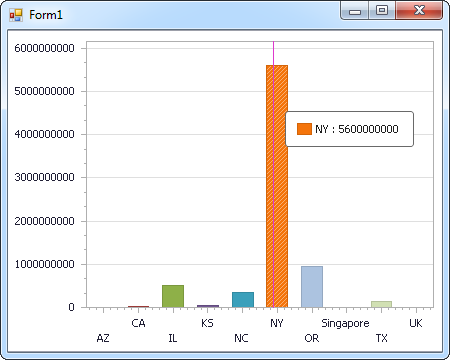Discover how a bimodal integration strategy can address the major data management challenges facing your organization today.
Get the Report →DataBind Gmail Data to the DevExpress Data Grid
Use the CData ADO.NET Provider for Gmail with the DevExpress Windows Forms and Web controls to provide Gmail data to a chart.
The ADO.NET Provider for Gmail by CData incorporates conventional ADO.NET data access components compatible with third-party controls. You can adhere to the standard ADO.NET data binding procedures to establish two-way access to real-time data through UI controls. This article will demonstrate the utilization of CData components for data binding with DevExpress UI Controls (Windows Forms and Web controls), specifically binding to a chart that visualizes live data.
There are two ways to authenticate to Gmail. Before selecting one, first ensure that you have enabled IMAP access in your Gmail account settings. See the "Connecting to Gmail" section under "Getting Started" in the installed documentation for a guide.
The User and Password properties, under the Authentication section, can be set to valid Gmail user credentials.
Alternatively, instead of providing the Password, you can use the OAuth authentication standard. To access Google APIs on behalf on individual users, you can use the embedded credentials or you can register your own OAuth app.
OAuth also enables you to use a service account to connect on behalf of users in a Google Apps domain. To authenticate with a service account, you will need to register an application to obtain the OAuth JWT values.
In addition to the OAuth values, you will need to provide the User. See the "Getting Started" chapter in the help documentation for a guide to using OAuth.
Windows Forms Controls
The code below shows how to populate a DevExpress chart with Gmail data. The GmailDataAdapter binds to the Series property of the chart control. The Diagram property of the control defines the x- and y-axes as the column names.
using (GmailConnection connection = new GmailConnection(
"User=username;Password=password;")) {
GmailDataAdapter dataAdapter = new GmailDataAdapter(
"SELECT Subject, Size FROM Inbox", connection);
DataTable table = new DataTable();
dataAdapter.Fill(table);
DevExpress.XtraCharts.Series series = new DevExpress.XtraCharts.Series();
chartControl1.Series.Add(series);
series.DataSource = table;
series.ValueDataMembers.AddRange(new string[] { "Size" });
series.ArgumentScaleType = DevExpress.XtraCharts.ScaleType.Qualitative;
series.ArgumentDataMember = "Subject";
series.ValueScaleType = DevExpress.XtraCharts.ScaleType.Numerical;
chartControl1.Legend.Visibility = DevExpress.Utils.DefaultBoolean.False;
((DevExpress.XtraCharts.SideBySideBarSeriesView)series.View).ColorEach = true;
}

Web Controls
The code below shows how to populate a DevExpress Web control with Gmail data. The GmailDataAdapter binds to the Series property of the chart; the Diagram property defines the x- and y-axes as the column names.
using DevExpress.XtraCharts;
using (GmailConnection connection = new GmailConnection(
"User=username;Password=password;"))
{
GmailDataAdapter GmailDataAdapter1 = new GmailDataAdapter("SELECT Subject, Size FROM Inbox", connection);
DataTable table = new DataTable();
GmailDataAdapter1.Fill(table);
DevExpress.XtraCharts.Series series = new Series("Series1", ViewType.Bar);
WebChartControl1.Series.Add(series);
series.DataSource = table;
series.ValueDataMembers.AddRange(new string[] { "Size" });
series.ArgumentScaleType = ScaleType.Qualitative;
series.ArgumentDataMember = "Subject";
series.ValueScaleType = ScaleType.Numerical;
((DevExpress.XtraCharts.SideBySideBarSeriesView)series.View).ColorEach = true;
}







